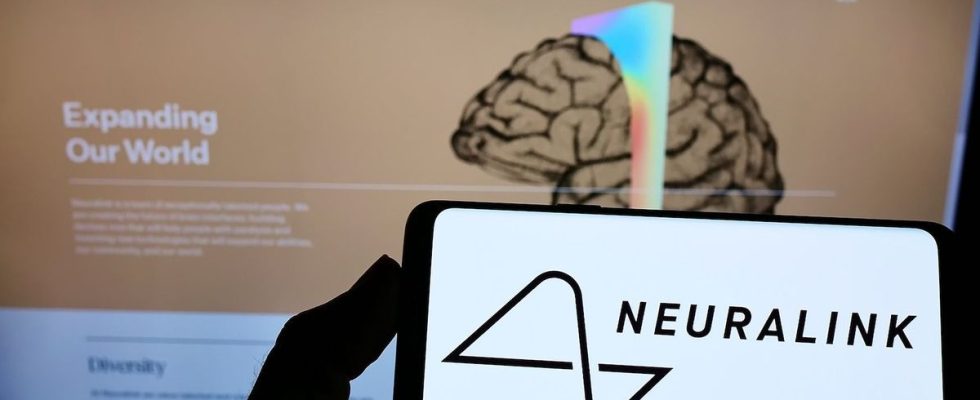Published on
Updated
Reading 3 min.
Through the voice (the tweet) of its famous president Elon Musk, Neuralink has just announced that it has placed its first implant in the brain of a human. The goal: to control numerous connected devices by just thinking. Focus on the promises of this brain-machine interface.
Neuralink: a first man implanted according to Elon Musk
It was on X that the American billionaire announced the news: “The first human received a Neuralink implant yesterday and is recovering well. First results show promising neuronal activity“.
The first human received an implant from @Neuralink yesterday and is recovering well.
Initial results show promising neuron spike detection.
— Elon Musk (@elonmusk) January 29, 2024
With his sense of communication and agile tweeting, he adds “Neuralink’s first product is called Telepathy. It allows you to control your phone or computer, and through them almost any device, simply by thinking. The first users will be those who have lost the use of their limbs. Imagine if Stephen Hawking could communicate faster than a typist or an auctioneer. This is the objective“.
Enables control of your phone or computer, and through them almost any device, just by thinking.
Initial users will be those who have lost the use of their limbs.
Imagine if Stephen Hawking could communicate faster than a speed typist or auctioneer. That is the goal.
— Elon Musk (@elonmusk) January 30, 2024
This announcement was eagerly awaited and even if the billionaire had announced a very ambitious schedule (as usual) for spring 2023 (after the broadcast of a video of a monkey playing Pong thanks to an implanted brain chip), the first establishments from 2024 remain a real step forward.
A device intended for disabled people
In 2023, Neuralink had indeed received the agreement from the American health authorities to be able to test its connected brain implants on humans and the company had immediately launched a campaign to recruit volunteers from Americans aged over 18 suffering from a severe physical handicap.
Neuralink can now experiment with its new medical testing protocol involving its fully implantable and wireless brain-computer interface. Once in place, the implant will have to transmit brain signals to an application responsible for decoding them and transforming them into movement. The goal is, initially, to be able to allow disabled people to control various devices simply by thinking.
According to the firm, this technology could also help treat Parkinson’s disease or epilepsy – even if for the moment the modalities have not been specified… Caution remains in order, despite the means and energy by Elon Musk, the billionaire had already declared that he would give sight to the blind or hearing to deaf people.
The billionaire’s announced objective is to have an interface to connect human intelligence to artificial intelligence, in particular to ensure that the latter cannot surpass the first and evolve into a threat to the human species. .
Other brain-machine interfaces already advanced
Other experiments with brain-machine interfaces are being tested, like the work of the Franco-Swiss team who were able to walk again thanks to two implants placed on the surface of his brain and at the level of his spinal cord.
In this case, the idea is that the two entities “communicate” between them, all connected to a portable device placed in a backpack.
Another spectacular case is that of a person unable to speak but who managed to communicate through a synthetic voice, by stimulating his brain. To achieve this result, Californian researchers tested brain implants, connected to computers, on a patient suffering from Charcot’s disease. Another similar experience involved a paraplegic patient following a brainstem hemorrhage, who had previously communicated at a maximum rate of 14 words per minute, using a head movement tracking technique.
Neuralink is nevertheless the first player to directly implant its chip in the brain and its first returns will be observed with great attention by the scientific world.
